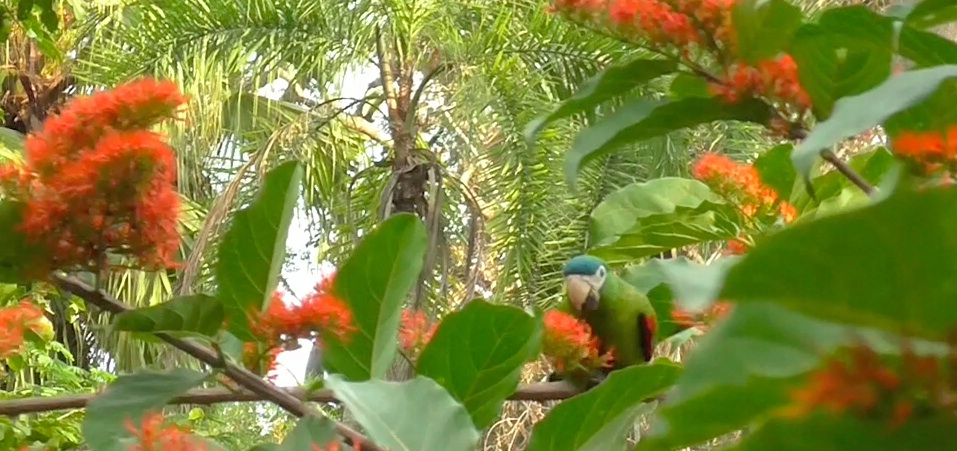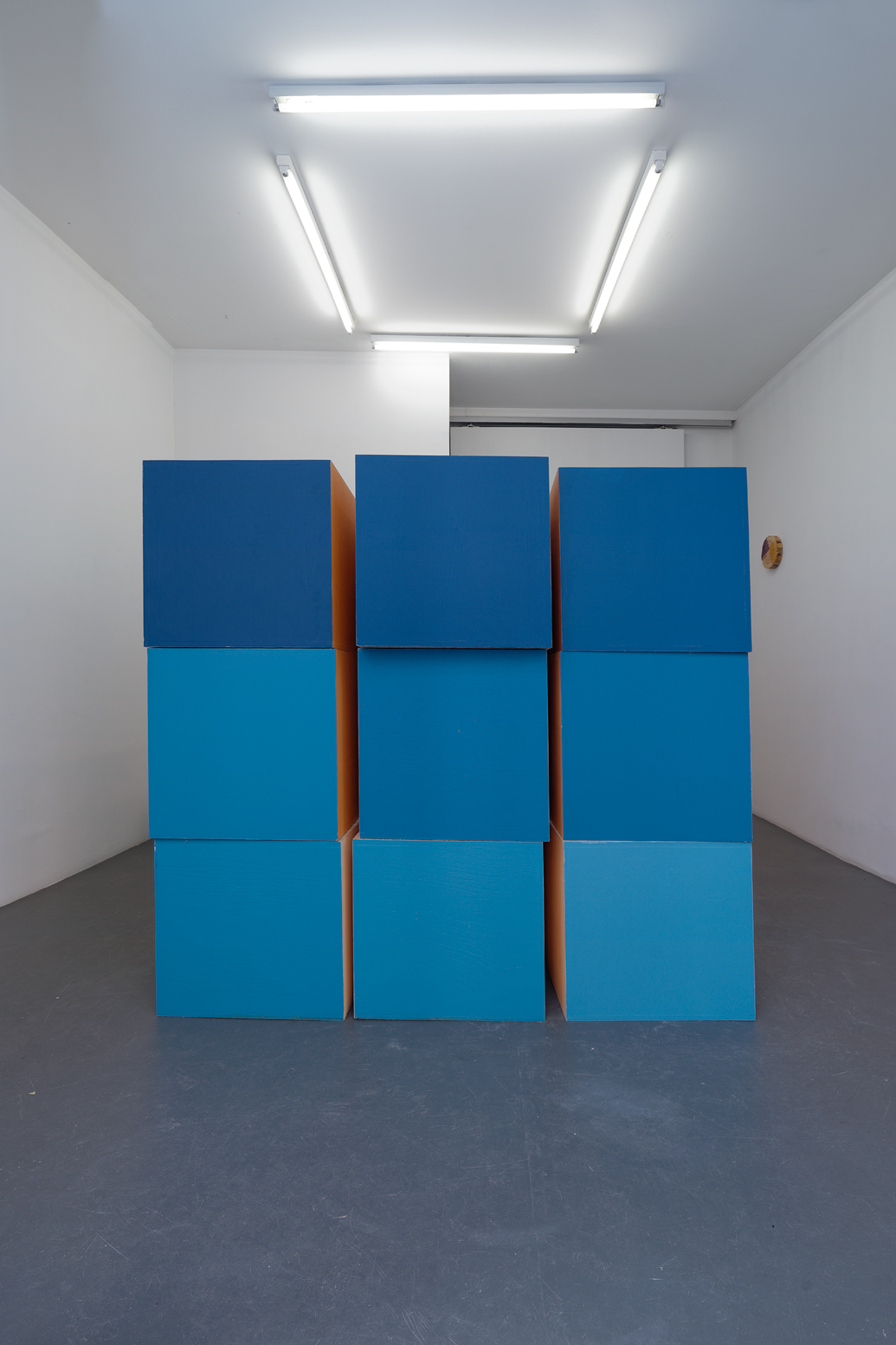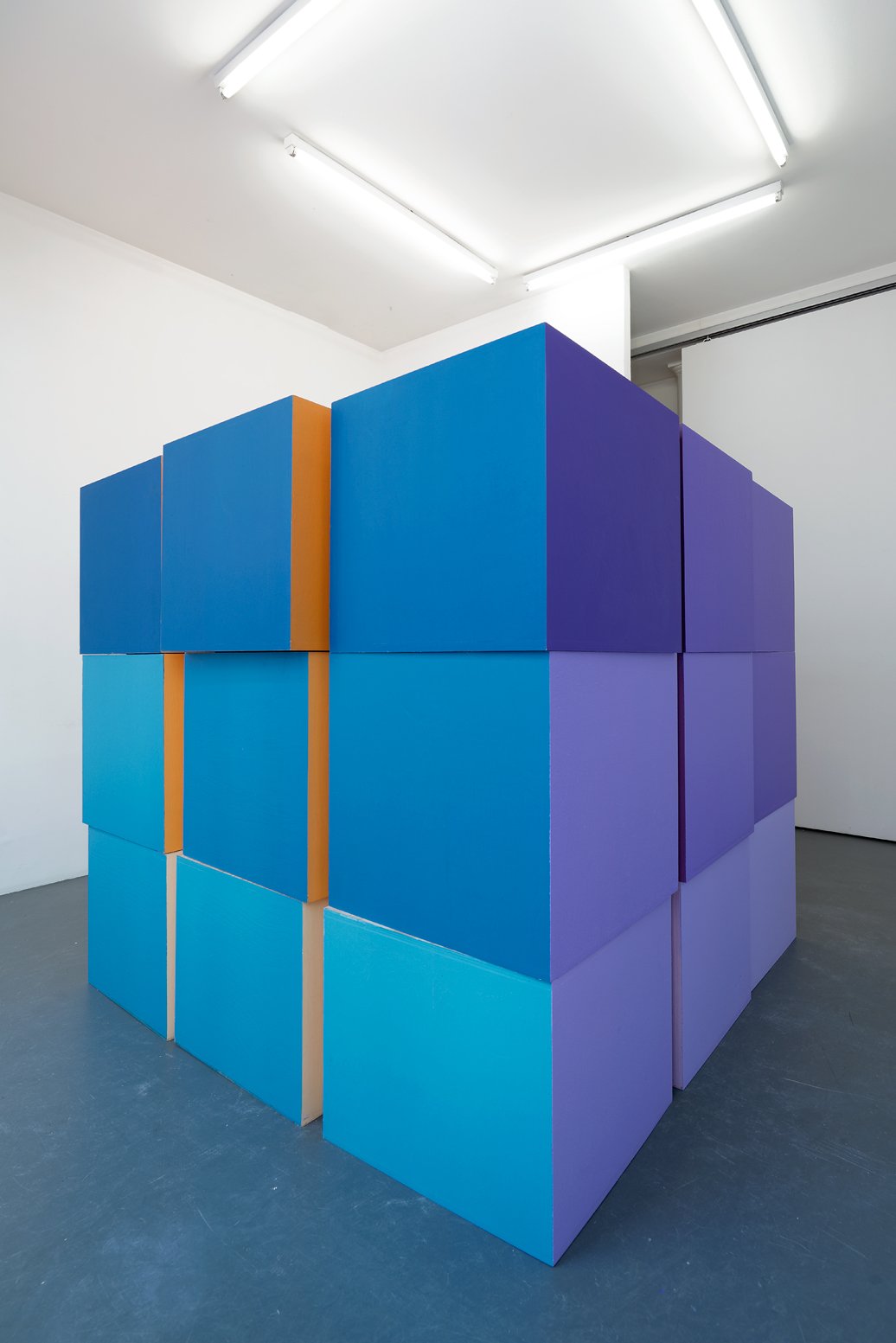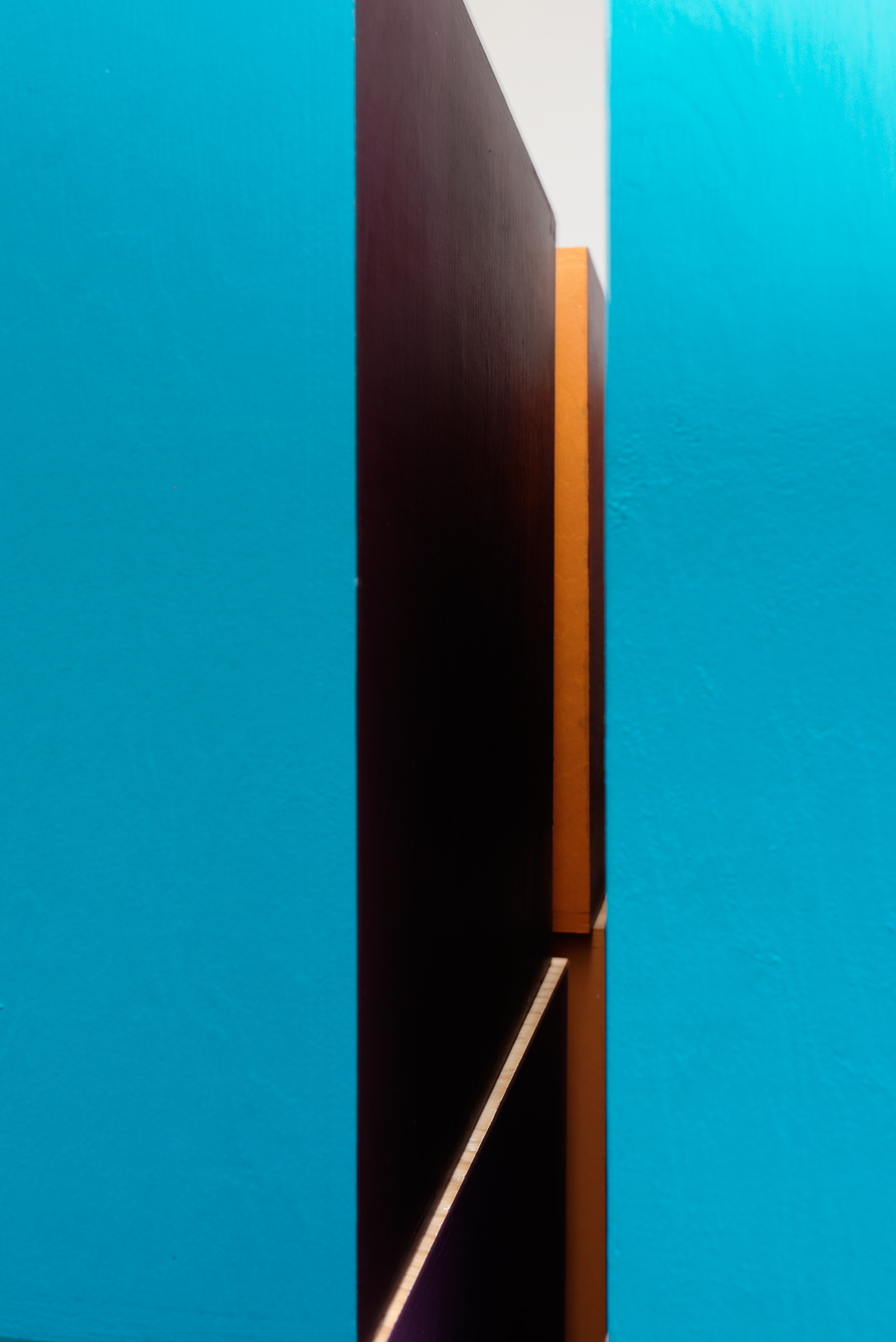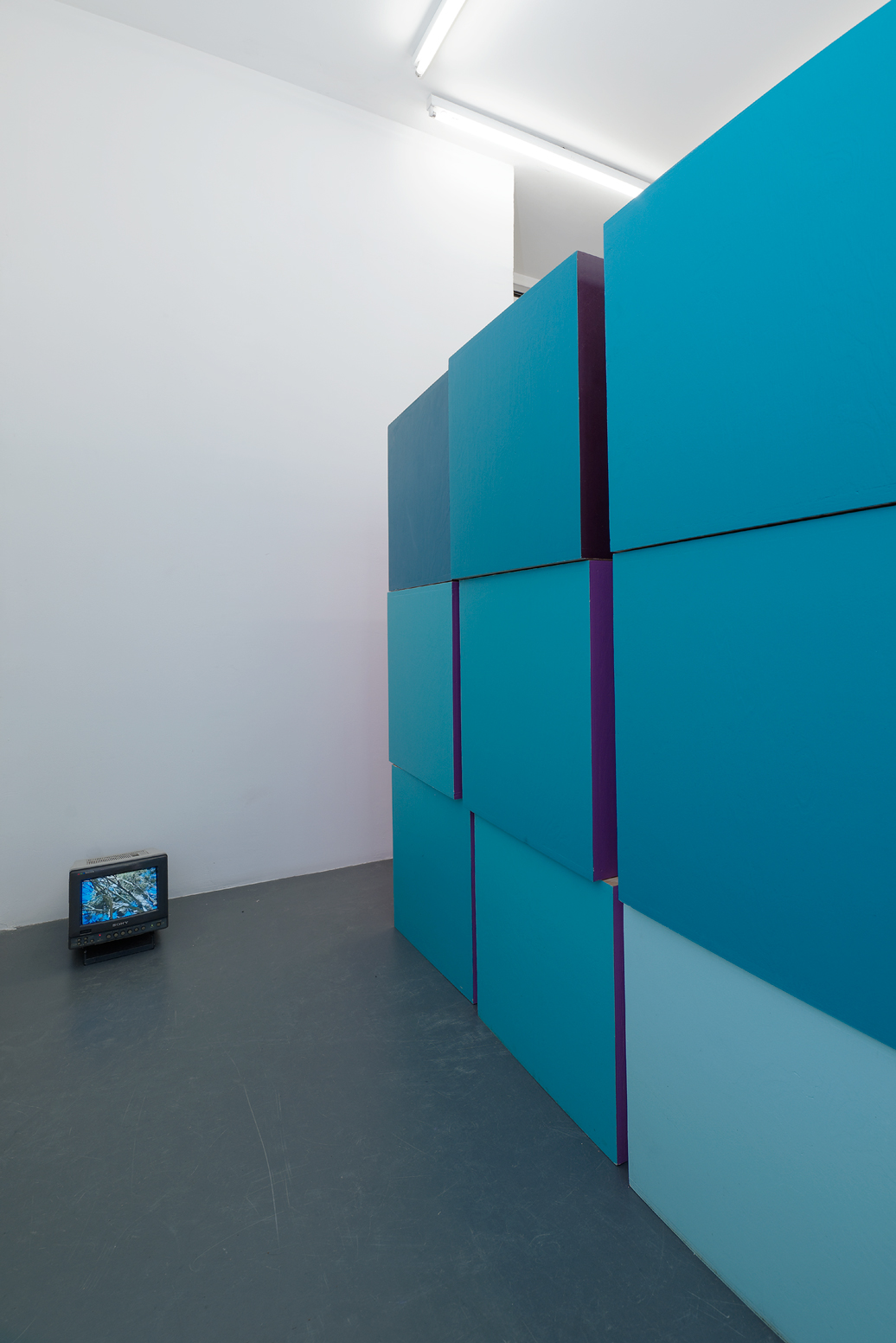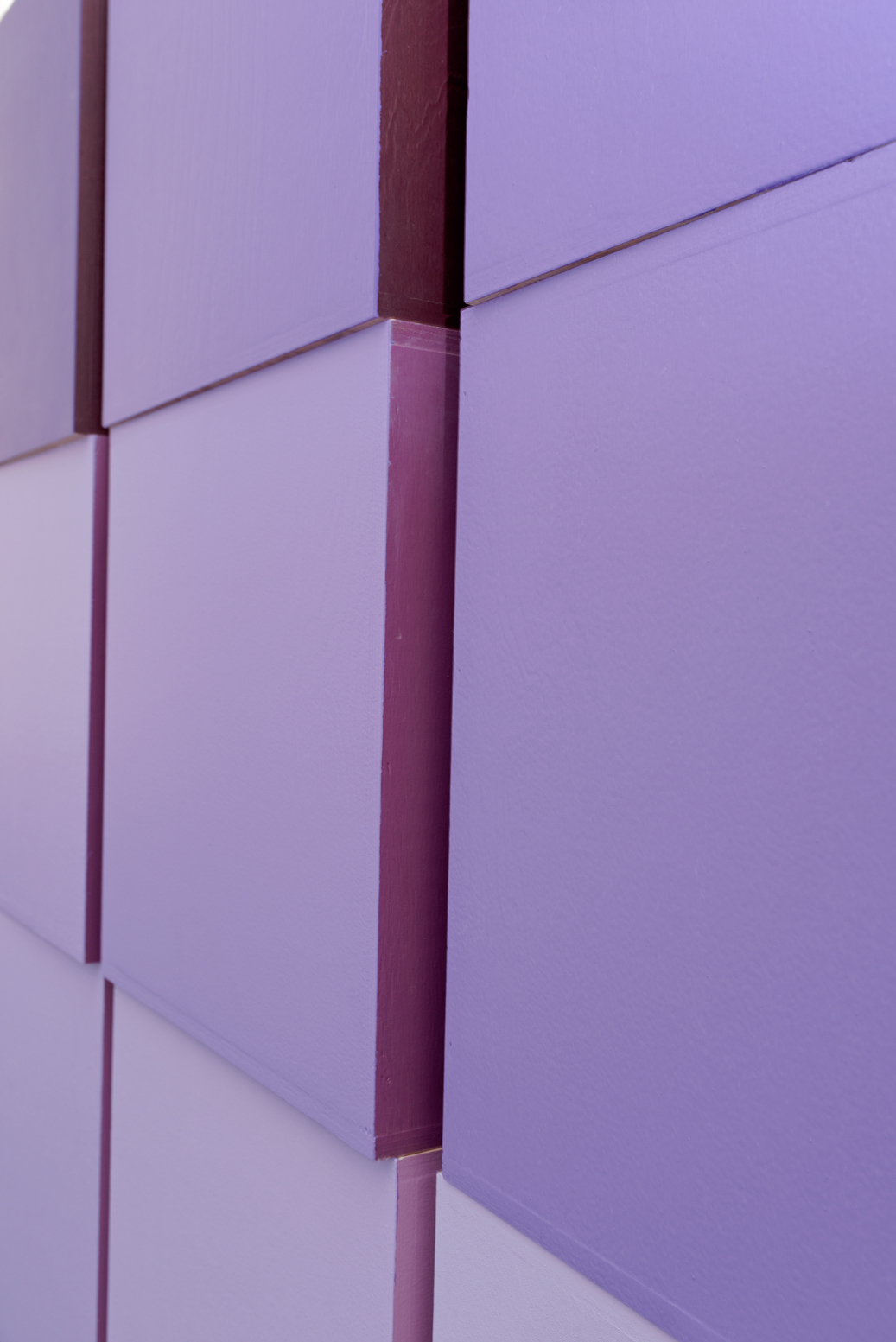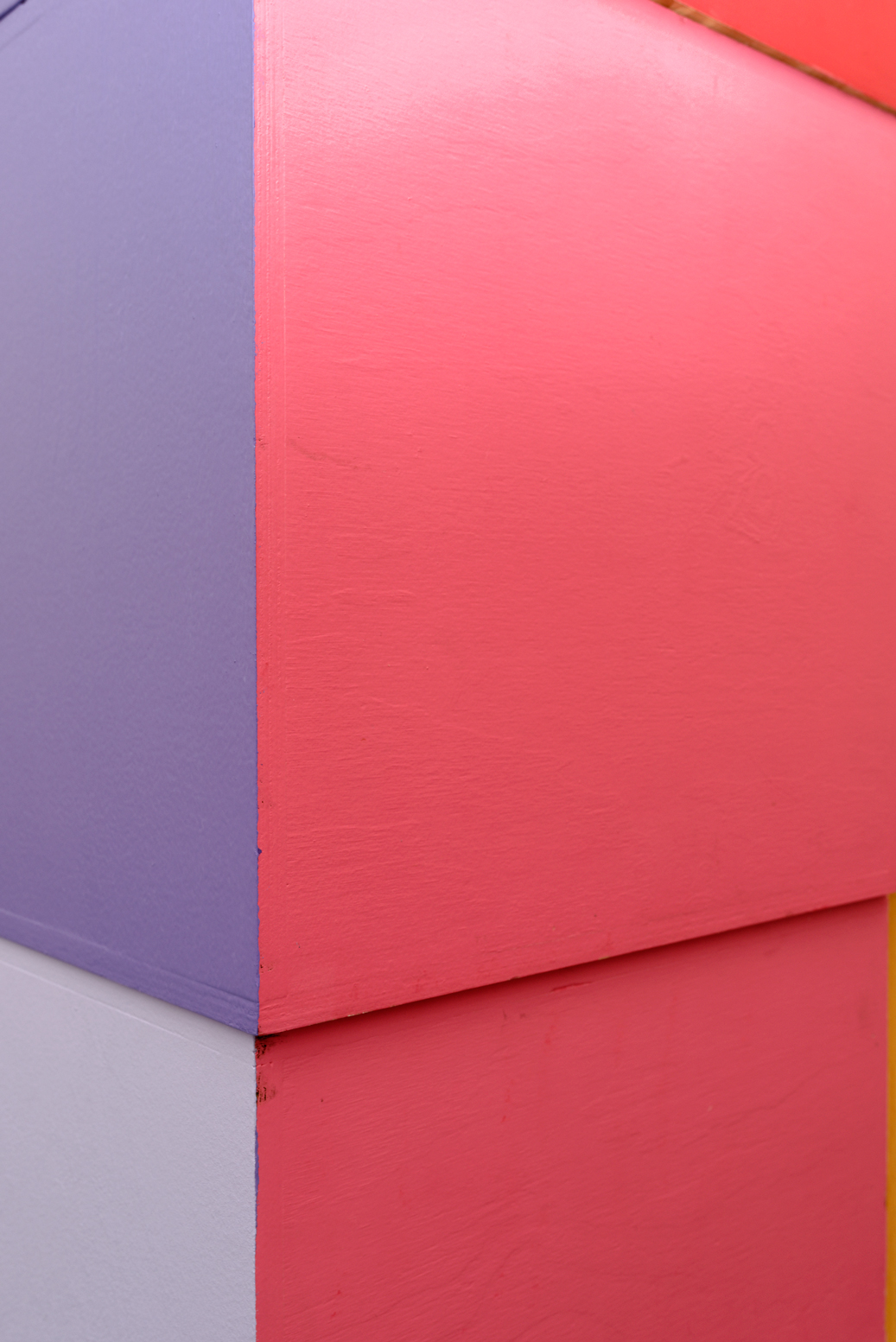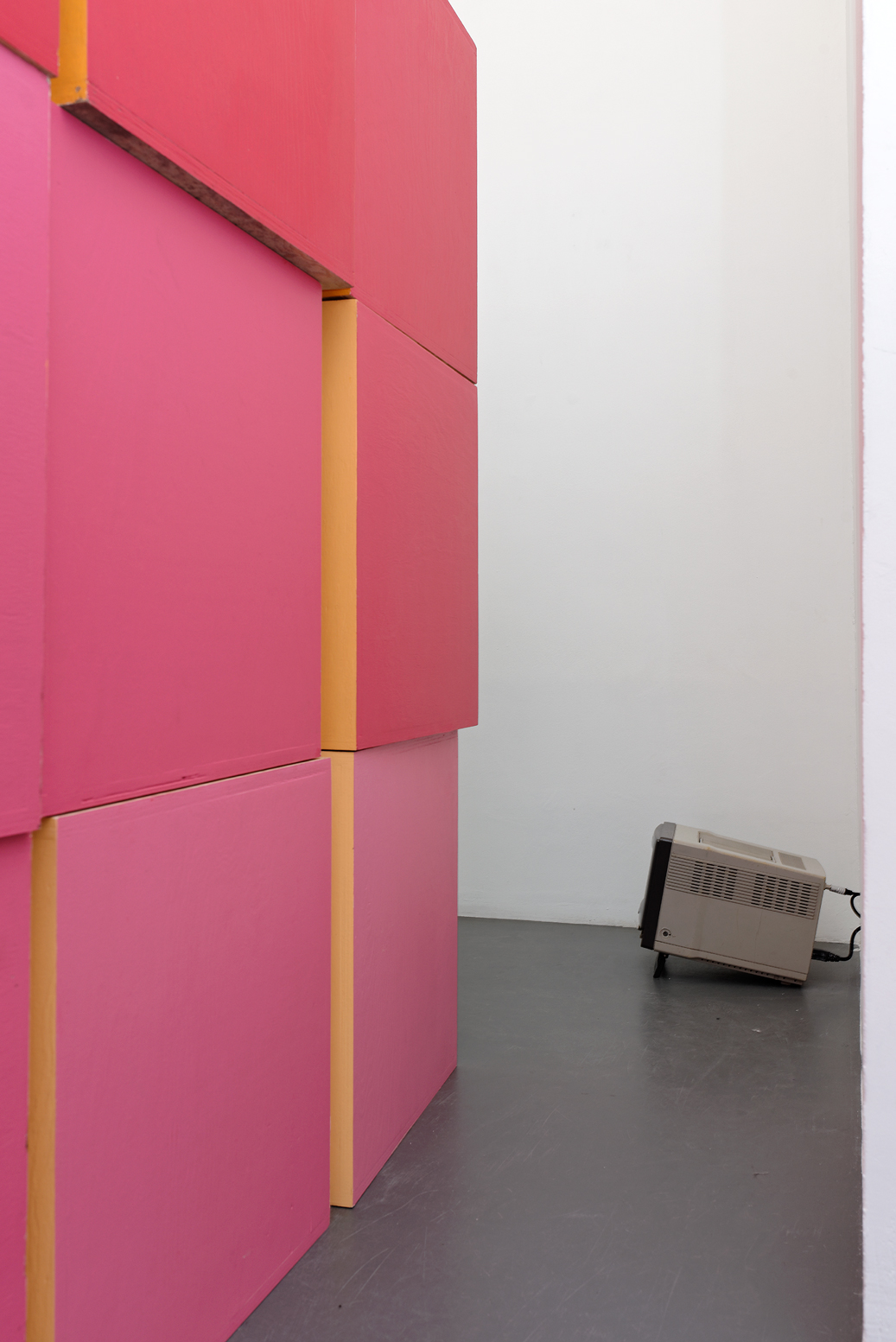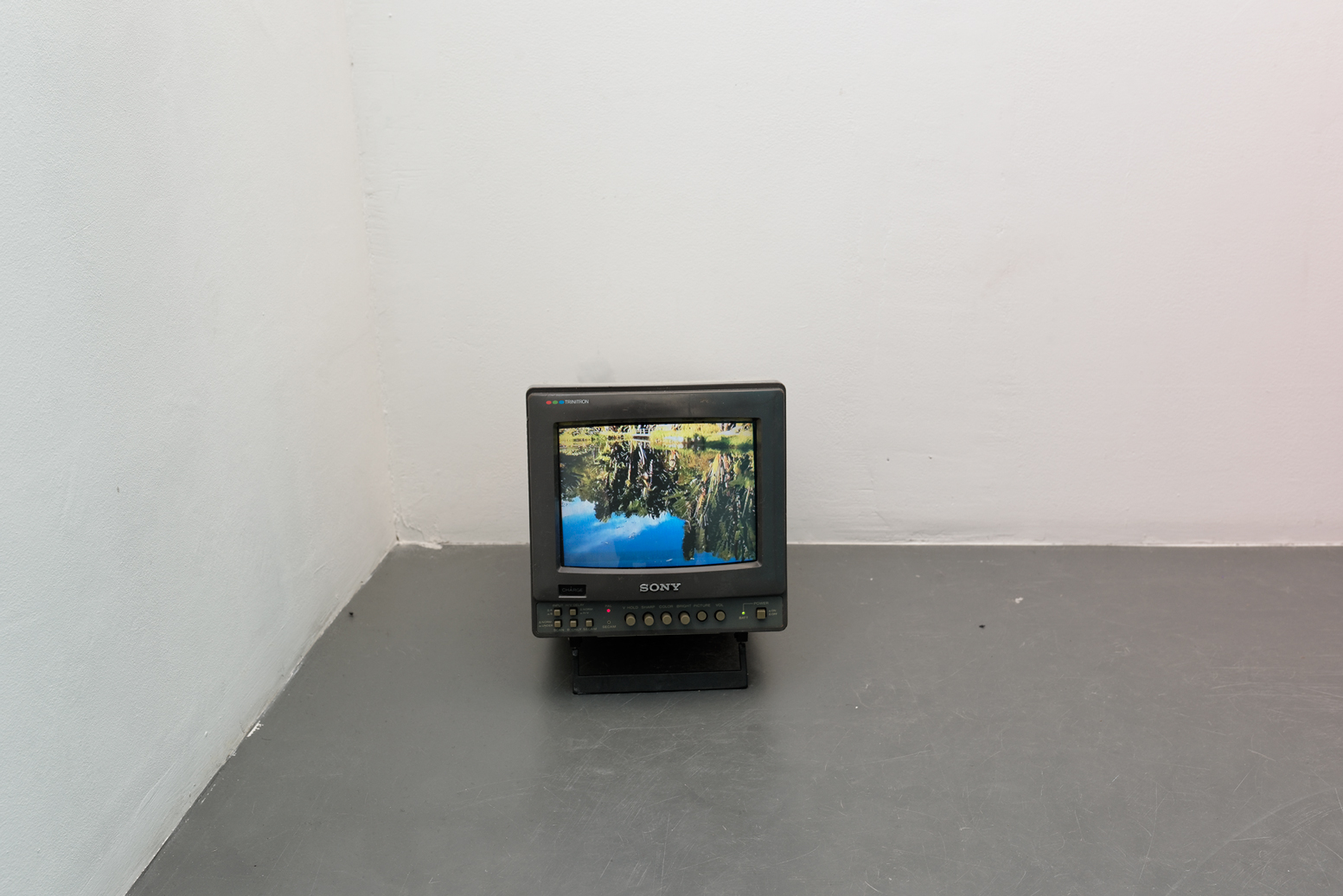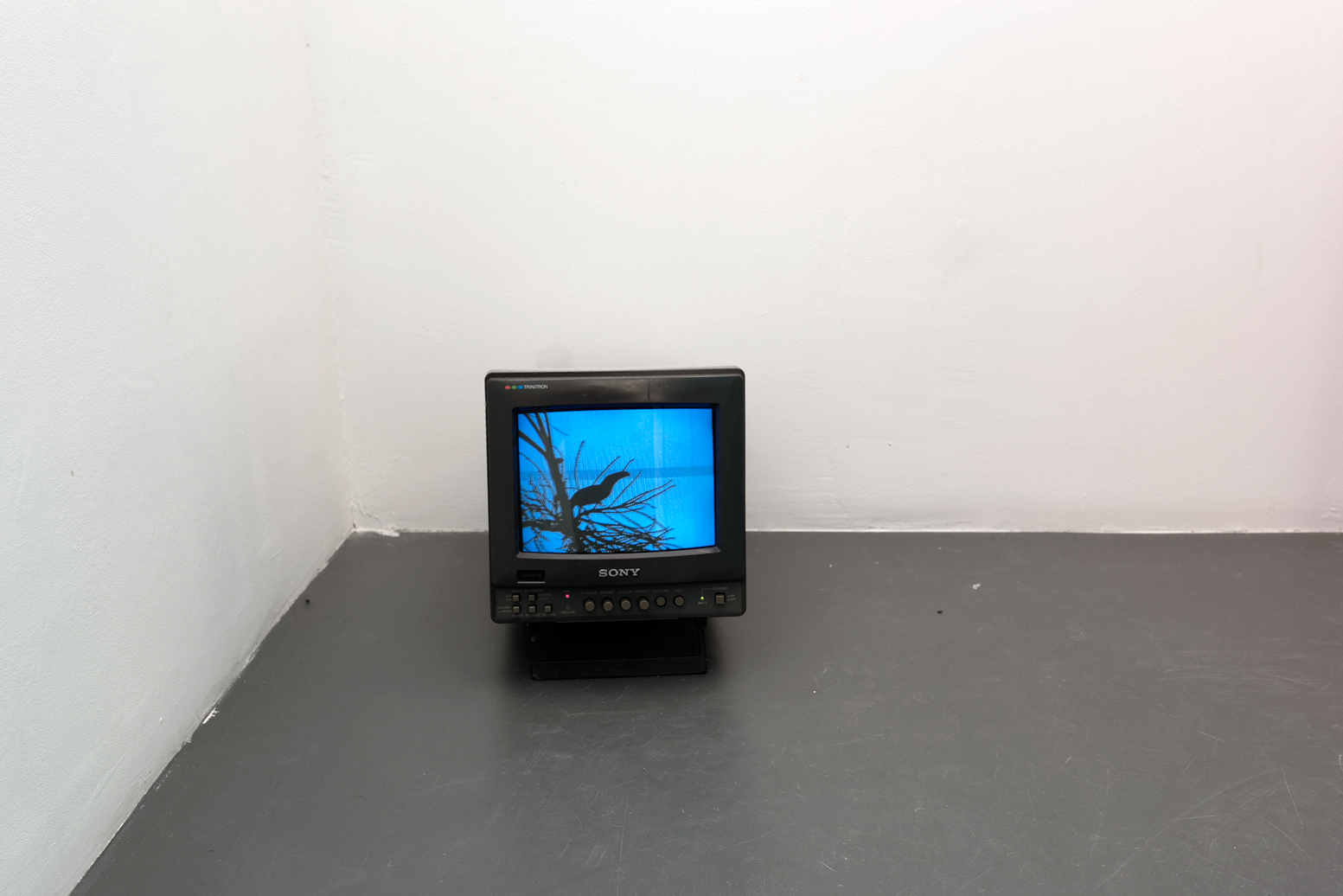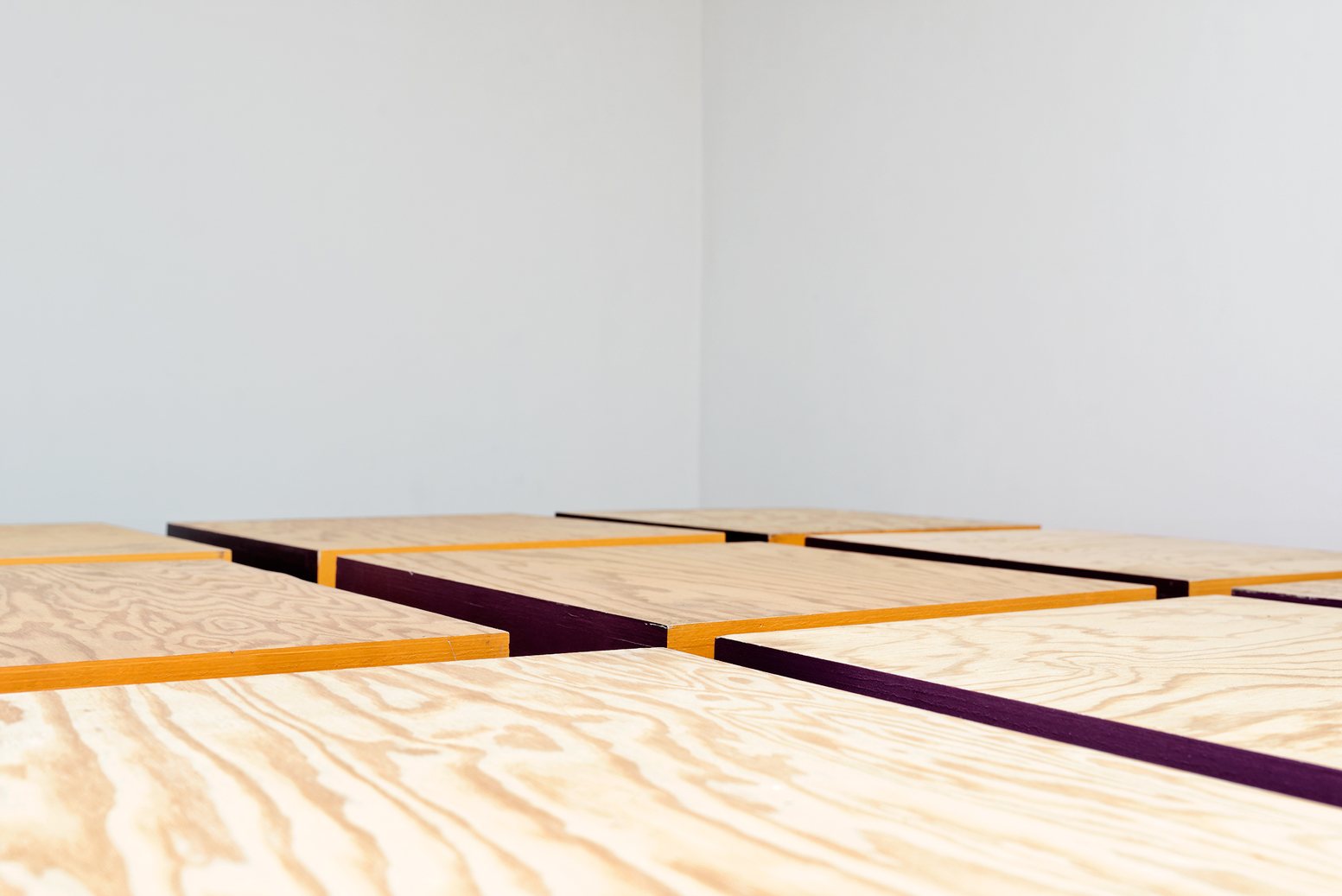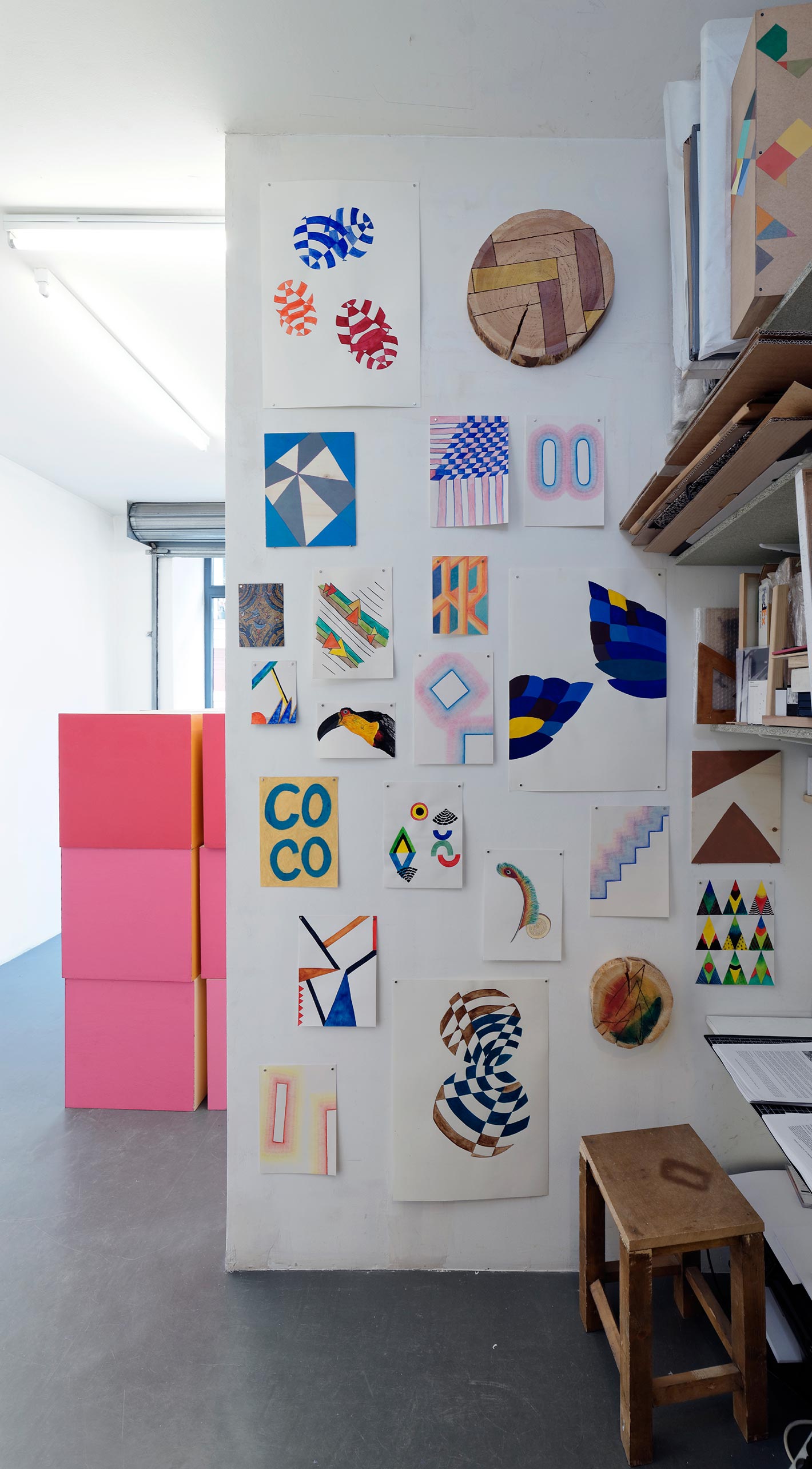Presentation :
Tête verte, dos rouge
Comment concevoir une image qui concilie observation naturaliste et dessin d'imagination sans se confondre avec une planche zoologique ni avec une composition arbitraire? Ou encore : comment abstraire le vert et le rouge tout en maintenant le souvenir d'une tête et d'un dos? Pour sa seconde exposition personnelle dans la galerie, Roxane Borujerdi chemine à la frontière où l'abstraction flirte avec le réalisme.
Un ensemble d'oeuvres récentes saturent l'espace et les murs, à l'image d'une nature qu'on dit phobique du vide ? dans le contexte, la jungle brésilienne offrirait une comparaison idoine. A la faveur d'une résidence au Jardin Botanique de Rio de Janeiro dont elle revient tout juste, Roxane Borujerdi confie avoir mis sa « pratique du dessin abstrait à l'épreuve de la nature ». A l'observation patiente des oiseaux, offrant les circonstances pour d'intenses méditations, a succédé une transcription délibérément volage du plumage des animaux : si les dessins sont traversés par l'expérience de terrain, ils n'en sont pas pour autant des peintures sur le motif. Le filtre de la sensibilité de l'artiste a trié le fondamental de l'accessoire, pour restituer une couleur animée d'un souffle de vie. Les dessins prêtent allégeance à la nature-artiste et lui reconnaissent quelque chose de magique, une puissance d'émotion à transmettre.
Souvent, dans l'oeuvre de Roxane Borujerdi, les formes se gonflent ou s'épanchent, les motifs se reconfigurent du plan à l'espace, à l'instar de la divinité Thétis ou ? au choix du registre ? des personnages de Barbapapa ; à partir d'un corpus élémentaire de signes et de couleurs, les formes revêtent différents états, sont constamment redistribuées. La translation des échelles et de l'espace établit le concept d'image comme donnée transférable, à même de soutenir sa propre déformation sans corrompre son sens.
Le réagencement est également l'une des clés de l'oeuvre. Ici, un Cubo, un cube de cubes, lointain cousin d'un célèbre casse-tête, offre une multitude de combinaisons possibles. Le dégradé de couleurs suggèrerait éventuellement un protocole, mais la modularité prévaut et soustrait l'oeuvre à la permanence d'un état figé. Par jeu et commodité, l'agencement se veut aussi libre et fluide que possible.
De son propre aveu, l'artiste « explore l'intersection du rationalisme mathématique et de l'organicisme ». En funambule, son ?uvre progresse sur le fil tendu entre ordre géométrique ? pure invention de l'esprit humain ?, et régime organique où le trait et la coupe à main levée provoquent un « flou de bougé » naturellement ondulé. La rigueur se laisse distraire, au point que le style pourrait être qualifié par des oxymores du type « géométrie inexacte » ou « spontanéité contrôlée ».
Il n'y aurait qu'un pas vers le néo-concrétisme brésilien, qui préférait la sensibilité de l'« ?il-corps » à l'exactitude de l'« ?il-machine ». Pourtant, Roxane Borujerdi ne s'est jamais réclamée d'aucune filiation. Sa récente rencontre avec le Brésil a opéré moins comme catalyseur qu'opération-test, lui permettant de vérifier ses intuitions à l'aune des maîtres du néo-concrétisme, sans infléchir pour autant ses propres manières.
A mesure que l'exposition s'éloigne, elle nous laisse, entre autres, avec cette question pénétrante : cette forme-ci, est-ce du vert et du rouge, ou bien une tête et un dos?
Laetitia Chauvin
Green Head, Red Back
How to reconcile naturalist observation and imaginary drawing in an image that could not be confused with neither a zoological plate nor an arbitrary composition? Or again: how to abstract the green or the red while holding on to the recollection of a head and a back? For her second solo show at the gallery, Roxane Borujerdi wanders along the border where abstraction and realism flirt.
Space and walls, like nature, which is said to be phobic of the void, are saturated with her recent pieces ? in context, the Brazilian jungle might be a comparable image. Returning from a residence at Rio de Janeiro?s Botanical Garden, Roxane Borujerdi says she has ?confronted her abstract drawing practice to Nature,? patiently observing birds, offering a deliberately versatile transcription of their feathers: permeated with field experience, the drawings are not however motif paintings. The filter of the artist?s sensibility has sorted out the fundamental from the accessory, restituting a color animated with life. The drawings swear allegiance to nature as an artist, and recognize its magical feature, a power of emotions to be communicated.
In Roxane Borujerdi?s work, forms swell or expand, motifs are reconfigured from plane to space, like the divinity Thetis or ? on another register ? Barbapapa characters. From an elementary body of signs and colors, the shapes undergo several states, they are constantly redistributed. The translation of scales and space establish the concept of an image as a transferable data, capaable to sustain its own deformation without corrupting its meaning.
Rearrangement is also key to the work. Here, a Cubo, a cube of cubes, distant cousin of a well-known mind game, offers infinite potential combinations. The hues of colors could suggest a form of protocol, but modularity wins over and subtracts the piece to the permanence of a frozen state. Through play and commodity, the arrangement is as free and fluid as possible.
The artist claims to be ?exploring the intersection between mathematical rationalism and organicism?. Like a funambulist, her work evolves on a rope stretched between geometrical order ? a pure invention of the human mind ? and the organic state, where tracing and freehand cut provoke a naturally undulated ?movement blur?. Rigor is disturbed, to the point where the style could be defined with oxymora such as ?inexact geometry? or ?controlled spontaneity?.
Brazilian Neo-Concretism, which favored the sensitivity of the ?body-eye? rather than the accuracy of the ?machine-eye,? is only a few steps away. And yet, Roxane Borujerdi never claimed a filiation. Her recent encounter with Brazil operated less as a catalyst than as a test-operation, allowing her to measure her intuitions against the Masters of neo-concretism, without however deflecting her own manners.
The exhibition leaves us with a penetrating question: this particular form, is it green and red, or is it head and back?
Laetitia Chauvin

